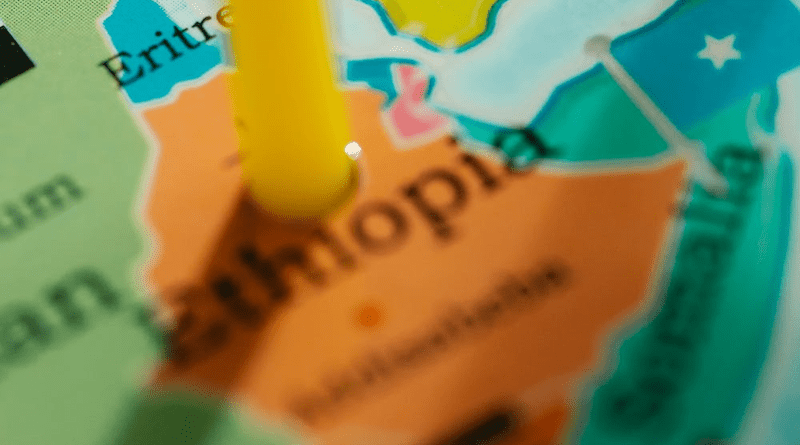Date: Friday, 17 October 2025

With rhetoric framing sea access as “existential” and deeply tied to Ethiopia’s historical identity, the country is attempting to redefine its geopolitical posture through initiatives such as the controversial Memorandum of Understanding (MoU) with Somaliland. However, despite the fanfare, this so-called strategy is more likely to follow the path of its predecessors: failure. The reasons are multifaceted, ranging from geopolitical resistance, international legal constraints, internal instability, economic limitations, and the broader militarized context of the Red Sea. Collectively, these factors render the Red Sea strategy a stillborn vision, doomed to remain aspirational rather than actionable.
At the core of the issue is the sheer geopolitical resistance Ethiopia faces from its immediate neighbors and beyond. Somalia has rejected outright the deal Ethiopia signed with Somaliland, viewing it as a direct violation of its territorial integrity. The African Union, United Nations, and most international actors recognize Somaliland as part of Somalia, making Ethiopia’s agreement not only controversial but legally dubious. Ethiopia’s claim to coastal access through such arrangements is built on sand, lacking the legitimacy required for a durable strategy. Eritrea, another key neighbor with historical ties to Ethiopia’s former coastline, remains wary and deeply hostile to any indication that Addis Ababa may seek to revive old claims, especially over the port of Assab. Meanwhile, Djibouti, the current conduit for over 90% of Ethiopia’s maritime trade, has little incentive to support Ethiopia’s diversification plans. It stands to lose economically if Ethiopia reduces its reliance on the Djiboutian corridor and would likely resist in both subtle and overt ways.
This growing wall of regional opposition is only intensified by the stance of external actors. Egypt, long embroiled in disputes with Ethiopia over the Grand Ethiopian Renaissance Dam (GERD), sees Ethiopia’s expansion toward the Red Sea as a new front in an old rivalry. Cairo views any effort by Addis Ababa to gain strategic depth in the Red Sea as a potential threat to its own maritime and geopolitical interests. This could prompt Egypt to deepen its military and diplomatic cooperation with Eritrea and Somalia, both of whom are wary of Ethiopian assertiveness. Thus, Ethiopia is likely to find itself encircled diplomatically and politically if it continues along its current course.
Beyond geopolitics lies the unforgiving terrain of international law. As a landlocked country, Ethiopia has transit rights to ports under the United Nations Convention on the Law of the Sea (UNCLOS), but it does not have sovereign rights to own or control ports in the territories of other nations. The Somaliland deal, if pursued with the intention of establishing military bases or sovereign control, runs directly against these norms. Without widespread recognition of Somaliland’s independence, any such deal remains not just fragile, but possibly illegal in the eyes of international law. This creates legal ambiguity that undermines Ethiopia’s credibility and opens it up to international rebuke, isolation, or even sanctions. It is doubtful that even if Somaliland was recognized, it would allow other countries to be in control of any part of its maritime zones.
Then there is the simple matter of economics. Ethiopia lacks the maritime infrastructure to sustain a serious naval or port presence. Building a blue-water navy from scratch is a multi-billion-dollar endeavor, as is constructing deep-water ports, logistical corridors, and the military installations that would be required to defend them. At a time when the Ethiopian economy is grappling with high debt, inflation, and a weakening currency, such dreams are fiscally unsustainable. Announcements about naval academies or training initiatives may serve as political signals, but they remain aspirational given the country’s limited financial bandwidth.
Finally, Ethiopia must contend with the broader strategic reality of the Red Sea itself. The region is one of the most militarized maritime zones on the planet, hosting naval bases from the United States, China, France, Saudi Arabia, Türkiye, and the UAE, among others. Yemen’s instability, the Houthi threat to shipping lanes, and increasing great power rivalry make the Red Sea a treacherous arena for any new actor, let alone one with limited naval capabilities and few regional allies. Ethiopia’s attempt to assert itself in this highly sensitive and competitive space risks triggering escalations that it is ill-equipped to manage.
In sum, the re-emergence of Ethiopia’s Red Sea strategy reflects a nation about to lose the peoples it conquered over the past one hundred years and a few decades, and expressing its grievances over an access it never had, except for a brief period it wrongly overwhelmed its federation with Eritrea, which ended in 1993. However, a national ambition cannot override geopolitical reality. Ethiopia’s latest iteration of this strategy repeats the same mistakes: overestimating its leverage, underestimating regional and population resistance, and ignoring the complex web of international law and diplomacy. Until Ethiopia builds internal unity, economic resilience, and regional trust, the Red Sea will remain out of reach, not for lack of desire, but for lack of viable strategy. Once again, this is a vision likely to be stillborn.